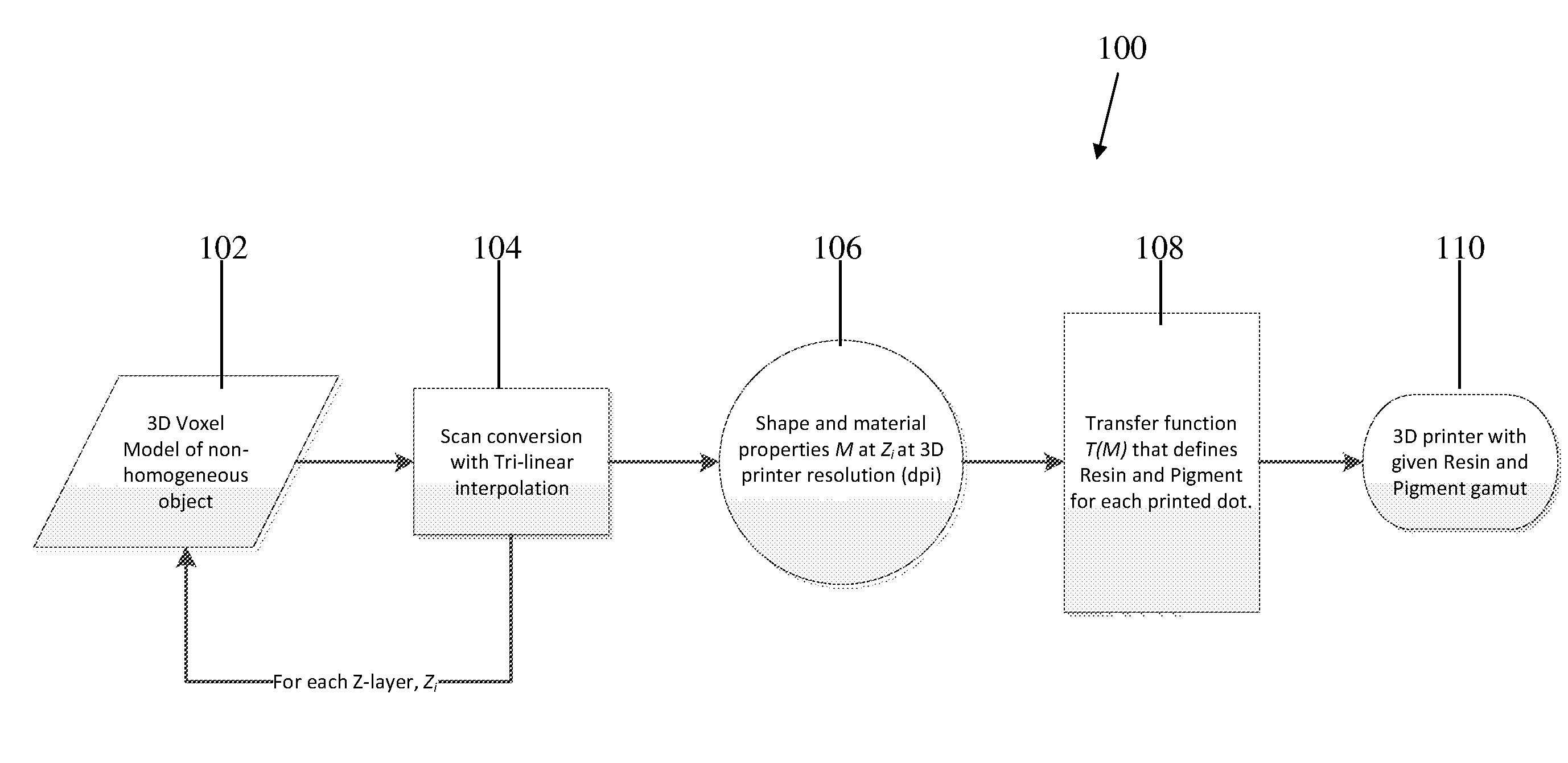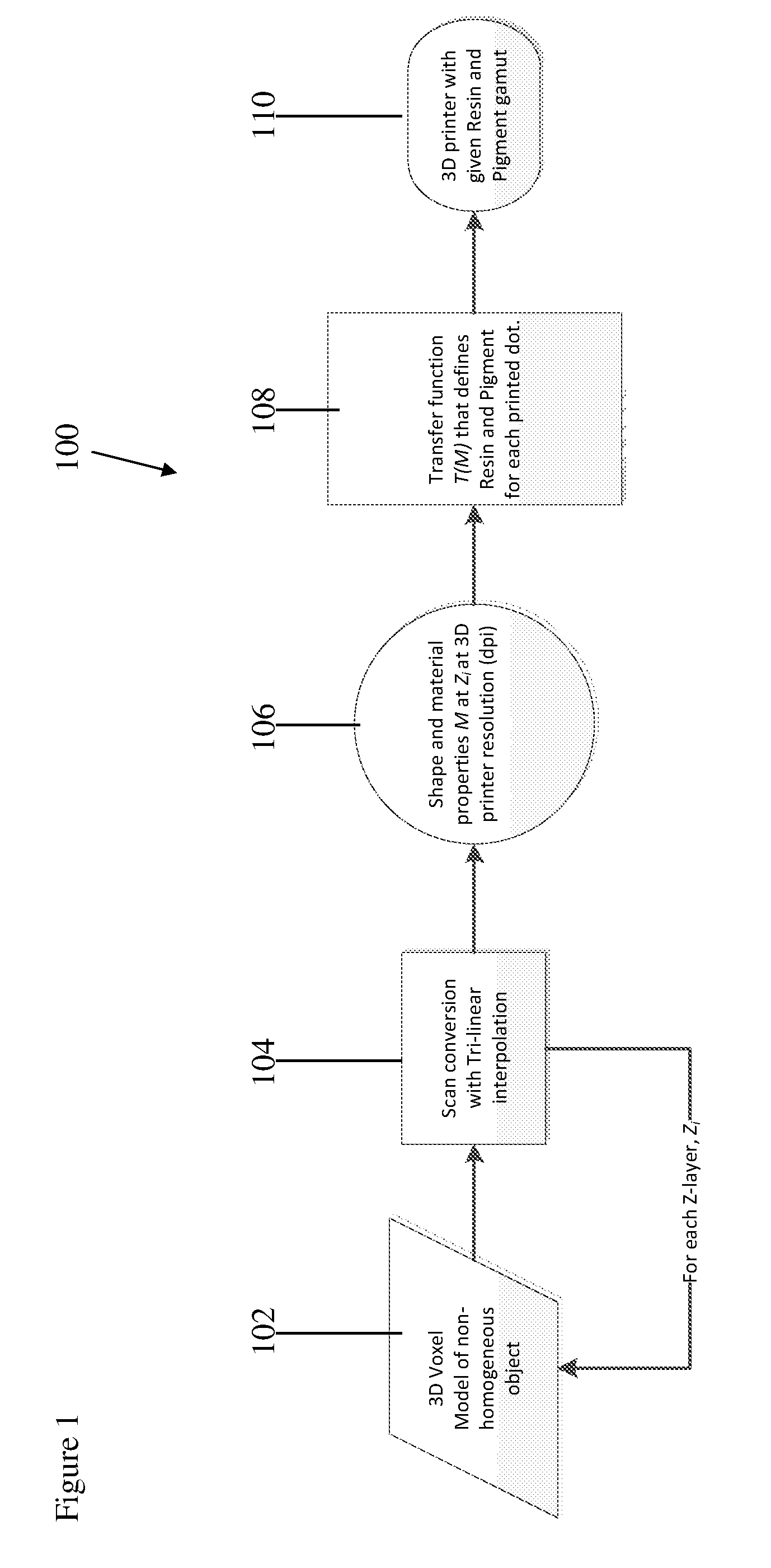Fabrication of Non-Homogeneous Articles Via Additive Manufacturing Using Three-Dimensional Voxel-Based Models
a technology of additive manufacturing and non-homogeneous articles, applied in the field of additive manufacturing systems for manufacturing non-homogeneous articles using three-dimensional voxel-based models, can solve the problems of difficult manufacturing a close replica of such a complex organic object, limited optical transparency of polycrystalline materials, and no commercial 3d printers capable of rapid manufacturing of realistic-looking, aesthetic teeth, veneers,
- Summary
- Abstract
- Description
- Claims
- Application Information
AI Technical Summary
Benefits of technology
Problems solved by technology
Method used
Image
Examples
Embodiment Construction
[0025]It is contemplated that devices, systems, methods, and processes of the claimed invention encompass variations and adaptations developed using information from the embodiments described herein. Adaptation and / or modification of the devices, systems, methods, and processes described herein may be performed by those of ordinary skill in the relevant art.
[0026]Throughout the description, where devices and systems are described as having, including, or comprising specific components, or where processes and methods are described as having, including, or comprising specific steps, it is contemplated that, additionally, there are devices and systems of the present invention that consist essentially of, or consist of, the recited components, and that there are processes and methods according to the present invention that consist essentially of, or consist of, the recited processing steps.
[0027]It should be understood that the order of steps or order for performing certain actions is i...
PUM
| Property | Measurement | Unit |
|---|---|---|
| thickness | aaaaa | aaaaa |
| Young's modulus | aaaaa | aaaaa |
| volume fraction | aaaaa | aaaaa |
Abstract
Description
Claims
Application Information
 Login to View More
Login to View More - R&D
- Intellectual Property
- Life Sciences
- Materials
- Tech Scout
- Unparalleled Data Quality
- Higher Quality Content
- 60% Fewer Hallucinations
Browse by: Latest US Patents, China's latest patents, Technical Efficacy Thesaurus, Application Domain, Technology Topic, Popular Technical Reports.
© 2025 PatSnap. All rights reserved.Legal|Privacy policy|Modern Slavery Act Transparency Statement|Sitemap|About US| Contact US: help@patsnap.com


